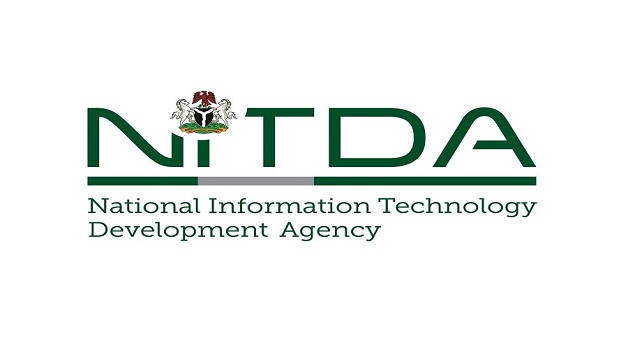E-Business
How to Protect the Brand Name from Cyberthreats

According to the latest global Kaspersky spam and phishing report, pages impersonating delivery services in 2022 had the highest percentage of clicks on phishing links (27.38%).

Online stores (15.56%) placed second. Payment systems and banks ranked third and fourth, respectively. Cybercriminals use brands other people have worked hard to build, and profit by using its good name to conduct their criminal activity.
While operating a website they’ve created that is a good copy of a brand or online service, they employ accurate and detailed content to ‘phish’ anything from login credentials to personal and professional identities, sensitive company, or financial information.
It can lead to data and money loss but also great reputational risks as it creates a negative perception of the original brand by the audience.
To protect the brand from possible cyber risks Olga Svistunova, Web Content Analyst at Kaspersky, calls to follow these rules:
1) Educate both employees and customers on how to recognise a phishing email or a phishing website. Low cybersecurity awareness among company staff may lead to the shutdown of important business processes and data leakage. Cybercriminals can take over corporate social media accounts and carry out malicious activities on its behalf.
Your customers are also at risk – they should be aware of possible threats to be able to recognise them. To reach this goal businesses can conduct dedicated cybersecurity training for staff and create special stories or series of security-awareness emails explaining how to identify the phishing activities for customers.
2) If you work in the financial or any other sensitive sphere that often attracts cybercriminals, warn your clients about this fact and draw their attention to the increased risk of being deceived. Ask them to be more attentive to the emails and messages they receive.
3) Ask your customers to report all suspicious activities carried out on behalf of your brand. Ask them to provide screenshots and other proofs to be able to find out about suspicious actions in time.
4) Pay attention to the security settings of your social media accounts. As a rule, companies post information and communicate with their audience not only on their own resources, but also on external platforms. Be careful about the privacy settings on such platforms, study them thoroughly, create complex strong passwords and set up two-factor authentication, if possible.
5) Apply threat intelligence tools – such as Kaspersky Digital Footprint Intelligence – to indicate brand impersonation attacks in time. Such solutions can provide you with real-time notifications about Targeted Phishing and faked Social Networks accounts and help to track the appearance of the phishing website targeting the brand name of a company as well as to monitor and takedown fake social network accounts and Apps in mobile marketplaces.
E-Business
Microsoft Servers Hacked by Chinese Groups

Chinese “threat actors” have hacked Microsoft’s SharePoint document software servers and targeted the data of the businesses using it, the firm has said.

China state-backed Linen Typhoon and Violet Typhoon as well as China-based Storm-2603 were said to have “exploited vulnerabilities” in on-premises SharePoint servers, the kind used by firms, but not in its cloud-based service.
The US tech giant has released security updates in response and has advised all on-premises SharePoint server customers to install them.
“Investigations into other actors also using these exploits are still ongoing,” Microsoft said in a statement.
The firm said it had “high confidence” the hackers would continue to target systems which have not installed its security updates.
It added that it would update its website blog with more information as its investigation continues.
Microsoft said it had observed attacks in which hackers had sent a request to a SharePoint server “enabling the theft of the key material by threat actors”.
Charles Carmakal, chief technology officer at Mandiant Consulting firm, a division of Google Cloud, told reporter, it was “aware of several victims in several different sectors across a number of global geographies”.
Carmakal said it appeared that governments and businesses that use SharePoint on their sites were the primary target.
A number of adversaries who stole material encoded by cryptography were then able to regain ongoing access to the victims’ SharePoint data, he said.
“This was exploited in a very broad way, very opportunistically before a patch was made available. That’s why this is significant,” Carmakal said.
Carmakal said the “China-nexus actor” was deploying techniques similar to previous campaigns associated with Beijing.
Microsoft said Linen Typhoon had “focused on stealing intellectual property, primarily targeting organizations related to government, defence, strategic planning, and human rights” for 13 years.
It added that Violet Typhoon had been “dedicated to espionage”, primarily targeting former government and military staff, non-governmental organizations, think tanks, higher education, the media, the financial sector and the health sector in the US, Europe, and East Asia.
Meanwhile, Storm-2603 was “assessed with medium confidence to be a China-based threat actor”.
E-Business
NIMC Warns Nigerians of Fake NIN Website

National Identity Management Commission (NIMC) has issued a public warning that it is not associated with NINcard.com.

According to the commission, the website has been circulating online to offer services for Nigerians seeking National Identification Number (NIN) services.
NIMC, in a post on its official X account on Wednesday, said, “NINcard.com is not in anyway affiliated to NIMC. Stay vigilant!”
The warning was accompanied by screenshots of fake payment receipts and OTP request pages from the website, both of which were boldly stamped “FAKE” by NIMC to alert the public.
E-Business
NITDA, API Partner Against Harmful Online Content

National Information Technology Development Agency (NITDA), in partnership with the Advocacy for Policy and Innovation (API), has convened a one-day workshop in Abuja to advance dialogue on the draft Online Harm Protection (OHP) Bill to confront harmful online content.

The bill, a rights-based, locally rooted, and multi-stakeholder initiative, is aimed at addressing the challenges of the digital age.
The event, which held yesterday, brought together government officials, civil society, academics, digital platforms, and legal experts to shape a policy framework designed to combat online ills such as cyberbullying, disinformation, hate speech, digital exploitation, and gender-based violence, while safeguarding democratic freedoms and digital inclusion.
In his keynote remarks, Kashifu Inuwa, director general, NITDA urged a paradigm shift in the way society engages with digital technologies.
“For almost two decades, we have viewed digital technology through a consumer lens. But these technologies are not just products and services. They are transforming how we live, work, and interact. They shape our politics, our society, and our democracy,” he said.
Warning against unaccountable digital power in the hands of private corporations, the DG likened the digital journey to the tale of Alice in Wonderland, where initial fascination with innovation has given way to deeper concerns about privacy, autonomy, and manipulation by big tech platforms.
“We thought we were using Google, but now we realise Google is using us. Social media, once a tool of expression, has become a tool of surveillance and influence,” Inuwa noted.
He, therefore, emphasised the urgency of developing a democratic and accountable framework. He explained that following the 2021 Twitter ban, NITDA facilitated dialogue between the government and platform operators, leading to a Code of Practice that stressed Nigeria’s sovereignty and legal standards.
According to him, the same process birthed the multi-stakeholder steering committee and the OHP White Paper in December 2024, laying the foundation for the current legislative push.
Earlier in her opening remarks, Victoria Manya, co-founder, API, observed the moral and civic necessity of the bill.
Her words: “The internet did not break society, it merely revealed its unfiltered version. Every day, Nigerians are exposed to harassment, disinformation, exploitation, and even algorithmic violence. The OHP Bill is not a war on the Internet. It is a peace offering to its users, a social contract for a digital future that is safe, inclusive, and democratic.
“We cannot answer the question of algorithmic power with unchecked state control. We must answer it with shared, rights-based governance. This bill must not be written for the people, but with them.”

 E-Financial3 days ago
E-Financial3 days agoKuda Unveils New Wallet for Multiple Currencies

 Telecom3 days ago
Telecom3 days agoTelcos Resume SIM Card Sales after 2-Week Halt

 Telecom3 days ago
Telecom3 days agoNigeria, Others Achieve 84% Adult Mobile Phones Penetration

 E-Business3 days ago
E-Business3 days agoHow AI Alert by Airtel is Transforming Mobile Security in Africa

 Telecom2 days ago
Telecom2 days agoGlo Launches Nigeria’s First-of-its-kind Device Protection Plan

 E-Business3 days ago
E-Business3 days agoNITDA, API Partner Against Harmful Online Content

 Telecom2 days ago
Telecom2 days agoTelcos: How and Why Network Services have Been Poor

 News3 days ago
News3 days agoHorn of Africa Leaders Seek Enhanced Digital Integration for Increased Regional Growth



























